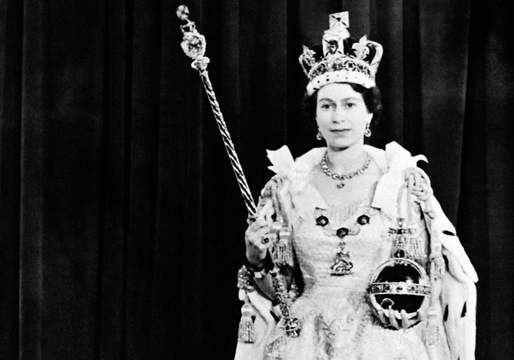
Queen Elizabeth II on her coronation day, in 1953.
The coronation ceremony dates back to 973 AD. We take a look at the flamboyant and intriguing historic traditions surrounding the coronation.
The British coronation ceremony is a time-honored tradition that has been taking place for over a thousand years. It is a significant event that symbolizes the monarch's divine right to rule and their duty to serve the people. The coronation is steeped in pageantry, religious significance, and symbolism, with many ancient traditions being observed during the ceremony. In this article, we will explore some of these traditions and their significance.
The origins of the coronation ceremony
The first recorded coronation in British history took place in 973 AD when King Edgar was crowned in Bath. However, the modern-day coronation ceremony dates back to 1066 when William the Conqueror was crowned as King of England in Westminster Abbey. The coronation ceremony has evolved over the centuries to reflect the changing times, with religious and secular influences shaping the ceremony.
The coronation regalia
One of the most significant traditions of the coronation ceremony is the use of the regalia. The regalia is a collection of sacred objects, including the crown, scepter, and orb, that are used during the coronation ceremony. The regalia represent the monarch's authority and power and is kept in the Tower of London when not in use.
The use of the regalia dates back to the Middle Ages, with many of the objects having religious symbolism. For example, the orb represents the world and is surmounted by a cross, symbolizing the monarch's role as a Christian ruler. The scepter represents the monarch's authority and is topped with a cross and a dove, symbolizing peace.
The anointing
Another significant tradition of the coronation ceremony is the anointing of the monarch with holy oil. The oil used in the ceremony is called the holy oil, and it is a mixture of olive oil and balsam. The anointing of the monarch with holy oil is a symbol of their sacred duty to serve the people.
The anointing takes place during the coronation service, and the Archbishop of Canterbury anoints the monarch on the forehead, breast, and hands. The anointing is followed by the presentation of the crown, symbolizing the monarch's authority, and the orb, symbolizing the world.
The oath
The monarch takes an oath during the coronation ceremony, pledging to uphold the laws and customs of the country and to rule with justice and mercy. The oath is an important tradition, emphasizing the monarch's duty to the people and the country.
The procession
Another significant tradition of the coronation ceremony is the procession from Buckingham Palace to Westminster Abbey. The procession is led by the royal regalia and includes state trumpeters, members of the royal family, and other dignitaries.
The procession is an important part of the ceremony, symbolizing the monarch's journey from their home to the place of their coronation. The route of the procession is lined with crowds of people, who cheer and wave flags as the monarch passes by.
The banquet
After the coronation ceremony, a banquet is held at Westminster Hall. The banquet is an opportunity for the monarch to celebrate their coronation with their guests and dignitaries. The banquet is an important tradition, emphasizing the monarch's role as a symbol of national unity and the importance of hospitality.
The British coronation ceremony is a time-honored tradition that has evolved over the centuries to reflect the changing times. The ceremony is steeped in pageantry, religious significance, and symbolism, with many ancient traditions being observed during the ceremony. These traditions emphasize the monarch's duty to serve the people and the country and are an important part of British history and culture.





Comments